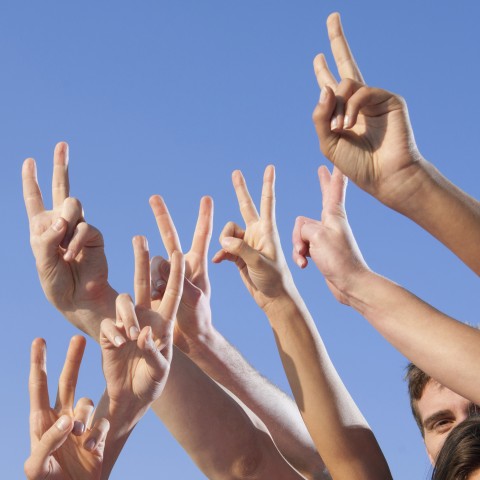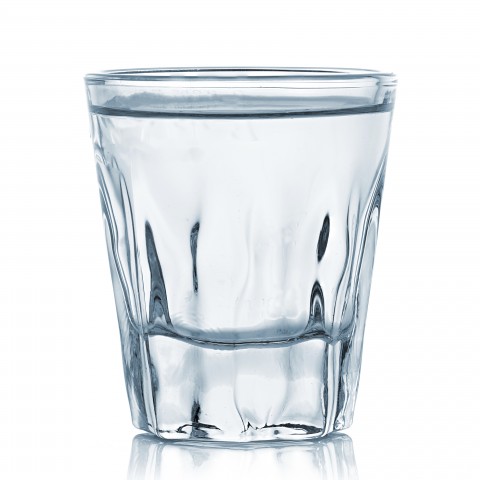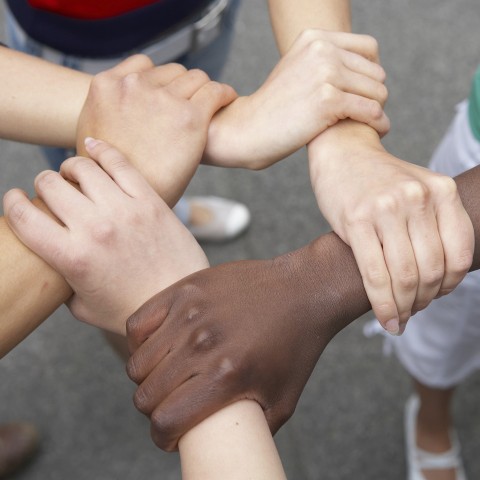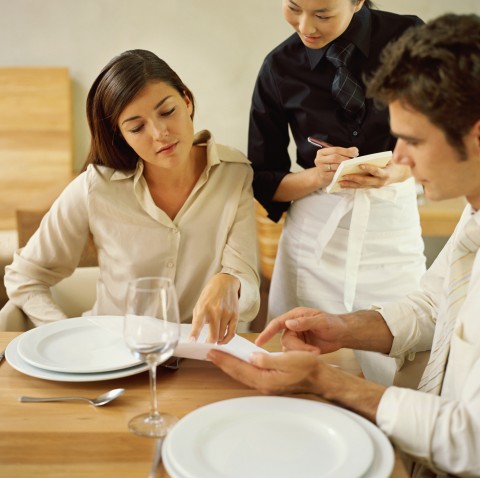
In general, people are fascinated by body language. Body gestures are all about movements—whether they’re visible or subtle—made by people to deliver a specific message to the listener. Additionally, it helps us understand additional non-spoken messages by a sender.
There are many benefits of learning Korean gestures and body language. Firstly, you’ll be able to communicate with locals more effectively. Secondly, you’ll be more likely to avoid miscommunication. And lastly, it’s fun to see the cultural differences and how some of these body gestures differ from those in your country, and so on. Therefore, we’ll introduce ten Korean hand gestures you should know here at KoreanClass101.
Practice these common body gestures in Korea, and you’ll start sounding and acting more like a native around your Korean friends. Start with a bonus, and download your FREE cheat sheet – How to Improve Your Korean Skills! (Logged-In Member Only)
Table of Contents
- Peace Sign
- Korean Heart
- “Let’s Go for a Drink” Gesture
- Receiving and Giving Something to Someone
- Covering Mouth when Laughing
- Two Thumbs Up
- Promise Handshake
- Come over Here
- The Double Hand Wave
- Korean “Rock, Paper, Scissors” Sign
- How KoreanClass101 Can Help You
1. Peace Sign
Everyone knows what the V sign is. However, the meaning of this gesture varies depending on the cultural context. In Korea, the peace sign is commonly used when taking pictures. Also, it can be used to show how proud you are of something. For example, when you’re praised by your friend for receiving a full mark for an exam, you can show this peace sign for “victory.” This is one of the more common hand gestures in Korean cultures.
Example:
A: 우와, 시험 100점 맞았어? 대박*.
A: uwa, siheom 100jeom majasseo? daebak.
A: “Wow you got a full mark for the exam? That’s awesome!”
B: (While showing the peace sign) 히히
B: hihi
B: “haha”
대박* is a Korean slang word for “awesome.”
—
C: 셀카* 찍자!
C: selka jjikja!
C: “Let’s take a selfie!”
D: 응 (While showing the peace sign) 치~즈!
D: eung chi~jeu!
D: “Okay, cheese!”
셀카* is a slang word for “selfie.”
2. Korean Heart
This Korean hand gesture is relatively new in Korea and to make this hand gesture is very easy. Take your thumb and index finger and cross them to make the shape of a heart—that’s it!
The heart gesture shows a tiny heart, but if you look at the entire hand, you’ll come to realize that it’s actually the shape of a human’s heart. Your fist is the shape of a heart and your two fingers, which are the index and the thumb, are two main vessels.
This Korean heart gesture is used to say “I like/love you” to someone and it’s commonly used to show how much you adore someone (e.g. K-Pop idol singers at a concert). You can also use this sign when you want to express how much you like something, such as food, toys, movies, and so on.
3. “Let’s Go for a Drink” Gesture
정승환 (Jung Seung-hwan), a Korean balad singer, in this video clip is telling someone in the crowd to go for a drink. The gesture indicates that the person is holding a small Soju glass and is emptying the glass by pretending to drink an invisible Soju.
That’s the gesture of “Let’s go for a drink.” This hand gesture is commonly used among friends, as a friendly gesture. Therefore, don’t use this gesture toward elders or people of a higher status than you; this is against Korean cultural etiquette.
4. Receiving and Giving Something to Someone
Giving and receiving an object with only one hand is considered rude in Korea. This is one of the common mistakes that foreigners make, since doing this movement with one hand is completely okay in many countries.
In Korea, you need to receive or give something with both hands; this is to show that you’re showing respect. You don’t necessarily need to do this for your friends, but you’ll definitely need to use both hands for elders or people of higher status.
Examples:
A: B씨, 이 자료들 오늘까지 처리 가능해요?
A: bissi, i jaryodeul oneulkkaji cheori ganeunghaeyo?
A: “Is it possible to finish working on these documents by today?”
B: 네, 팀장님. 오늘 중으로 처리하도록 하겠습니다. (Receives the documents with two hands)
B: ne, timjangnim. oneul jungeuro cheorihadorok hagetseumnida.
B: “Sure. I will try to finish them by today.” (Receives the documents with two hands)
—
C: 소주 한잔 드세요.
C: soju hanjan deuseyo.
C: “I will pour you a drink.”
D: 아, 네 감사합니다. (Holds a Soju glass with two hands)
D: a, ne gamsahamnida.
D: “Ah, sure, thank you.” (Holds a Soju glass with two hands)
5. Covering Mouth when Laughing
When you travel to South Korea, you’ll notice that many women hide their mouth with their hand when laughing. This is commonly done by women since it’s very feminine.
We’re not sure where this popular gesture in Korea originated from. However, it could be influenced by Confucianism, where it’s believed that public displays of emotion shouldn’t be expressed to others. Another assumption is that Korean women are shy in general and by hiding their mouth while laughing, they can avoid embarrassment (for instance, of food stuck in their teeth).
Example: You (female) are on a date with someone. When he makes you laugh, use this hand gesture to show your feminine side.
6. Two Thumbs Up
The one thumb up gesture is to say 잘했어요 (jalhaesseoyo) or “great job,” but if you do the two thumbs up gesture, it’s equivalent to 진짜 짱이다 (jinjja jjangida) or “it’s super awesome.” This gesture is used only among friends.
Examples:
A: 이번 방탄소년단 콘서트 어땠어?
A: ibeon bangtansonyeondan konseoteu eottaesseo?
A: “How was the BTS concert?”
B: [As you show two thumbs up] 진짜 짱이었어!
B: jinjja jjangieosseo!
B: “It was AWESOME!”
—
C: 이번에 새로 나온 게임하러 갈래?
C: ibeone saero naon geimhareo gallae?
C: “Do you want to go and play the new game?”
D: 아 그거? 나 벌써 해봤지. [As you show two thumbs up] 진짜 짱이야.
D: a geugeo? na beolsseo haebwatji. jinjja jjangiya.
D: “Ah that game? I already played. It was really great.”
7. Promise Handshake
Everyone knows how to make a “promise” hand gesture – it’s similar to a pinky swear. In Korea, a promise hand gesture itself isn’t enough; we have many more hand gestures after that. The most popular ones are “signature,” “scan,” and “handshake.” There are many varieties in Korea, so ask your Korean friends what their promise handshake gestures are.
Example: You made a vow to your friend that you’ll invite him over for dinner next Tuesday, but he seems doubtful. If you want to ensure that you’ll make it happen, do the promise hand gesture to gain his trust.
Examples:
A: 다음주까지 빌린 돈 꼭 갚을께 약속!
A: daeumjukkaji billin don kkok gapeulkke yaksok!
A: “I promise to pay back the money I owe you!”
B: 그럼 손가락 걸고 약속 하자.
B: geureom songarak geolgo yaksok haja.
B: “Then let’s do the promise handshake.”
8. Come over Here
If you want to ask someone to come to you with a gesture, Koreans hold their hand up with their palm down, and move it up and down. This gesture is exactly the same as in America, expect it’s an upside-down version.
If you use the American gesture (to say come here), Koreans may feel offended because it conveys a different meaning to them. You can’t use this gesture for elders or superiors, so be careful when using this hand gesture.
Example:
A: 수미야! 일루와봐! (hand gesture)
A: sumiya! illuwabwa!
A: “Sumi! Come over here!” (hand gesture)
B: 왜, 무슨일있어?
B: wae, museunirisseo?
B: “What’s up?”
9. The Double Hand Wave
This is another important body gesture in Korean cultures and is used when you want to strongly say “NO” to someone. You can use only one hand to say “no” to someone, but if you use two hands, it sends a strong message that you don’t want to do. Also, it can mean, “No thank you.”
For example: You spotted that someone dropped a wallet while walking in a busy street and you hand the wallet over to that person.
The conversation goes like this:
- You: 저기요, 지갑 떨어뜨리셨어요. 여기 있습니다.
You: jeogiyo, jigap tteoreotteurisyeosseoyo. yeogi itseumnida.
You: “Excuse me, you dropped your wallet. Here it is.” - Person: 어머, 너무 감사합니다. 감사의 표시로 무료 커피 사용 증정권 드릴께요.
Person: eomeo, neomu gamsahamnida. gamsaui pyosiro muryo keopi sayong jeungjeonggwon deurilkkeyo.
Person: “Oh, thank you so much. Please accept this free coffee coupon as a small token of my appreciation.” - You: *[Gently waving your two hands] 아니에요. 괜찮습니다.
You: anieyo. Gwaenchanseumnida.
You: “No. It is okay.”
*It’s a friendly gesture to refuse something offered by the person you’re talking to.
10. Korean “Rock, Paper, Scissors” Sign
In Korea, “Rock, Paper, Scissors” is called 가위 바위 보 (gawi bawi bo). Unlike the gestures you may be used to, there’s another way to show scissors in Korea, and it’s the shape of a gun.
How KoreanClass101 Can Help You
In summary, we introduced ten commonly used Korean gestures in Korea. Your conversation skills will definitely improve if you understand these Korean hand gestures. Speaking of improving your Korean skills, KoreanClass101 has many free study materials to help Korean learners master their language skills.
Do you want to improve your listening skills? Check out our vocabulary list called “How to Improve Your Listening Skills.” You can’t miss out on the latest Korean slang words either, so check out “Most Common Texting Slang” to level up your Korean slang words.
Why not create your lifetime account today and enjoy our Korean lessons? Start with a bonus, and download your FREE cheat sheet – How to Improve Your Korean Skills! (Logged-In Member Only)


















